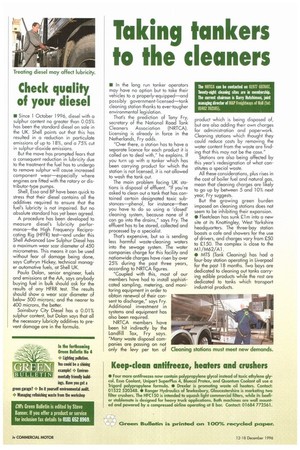Check quality of your diesel
Page 22

If you've noticed an error in this article please click here to report it so we can fix it.
• Since 1 October 1996, diesel with a sulphur content no greater than 0.05% has been the standard diesel on sale in the UK. Shell points out that this has resulted in a reduction in particulate emissions of up to 18%, and a 75% cut in sulphur-dioxide emissions.
But the move has prompted fears that a consequent reduction in lubricity due to the treatment the fuel has to undergo to remove sulphur will cause increased component wear—especially where engines are fitted with the rotary or distributor-type pumps.
Shell, Esso and BP have been quick to stress that their diesel contains all the additives required to ensure that the fuel's lubricity is not impaired. But no absolute standard has yet been agreed. A procedure has been developed to measure diesel's lubricity performance—the High Frequency Reciprocating Rig (FiFFR) test—and under this Shell Advanced Low Sulphur Diesel has a maximum wear scar diameter of 450 micrometres. This means it can be used without fear of damage being done, says Cathryn Hickey, technical manager automotive fuels, at Shell UK.
Paula Dolan, senior engineer, fuels and emissions at the AA, says anybody buying fuel in bulk should ask For the results of any HFRR test. The results should show a wear scar diameter of below 500 microns; and the nearer to 400 microns, the better.
Sainsbury City Diesel has a 0.01% sulphur content, but Dolan says that all the necessary lubricity additives to prevent damage are in the formula.
















































































































